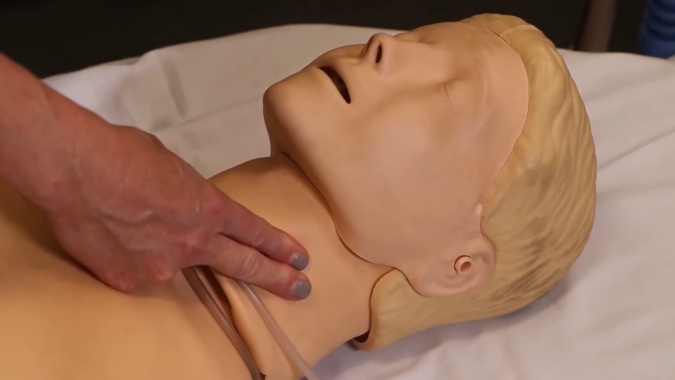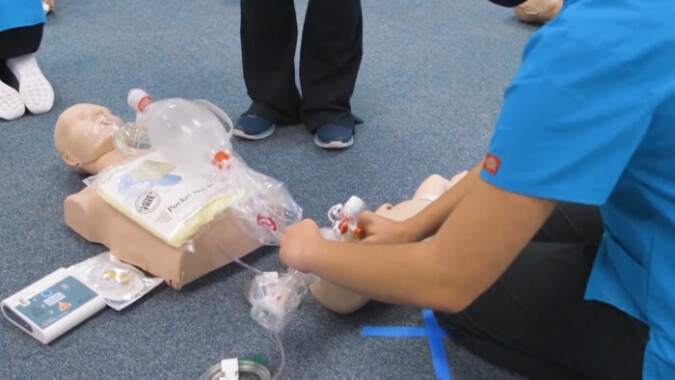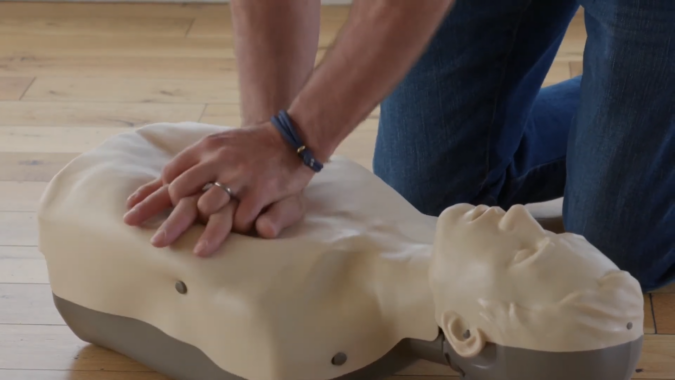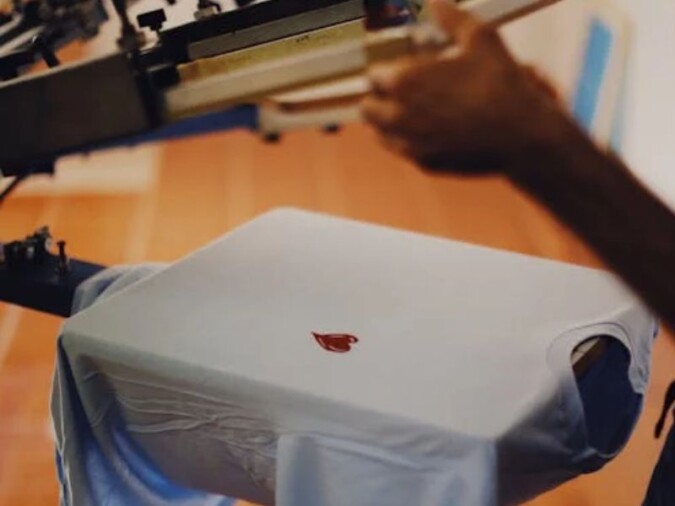Learning CPR is one of the most important skills you can acquire, but how long does it really take to become proficient in this life-saving technique? Many people are surprised to learn that mastering cardiac resuscitation doesn’t take weeks or months—it can actually be learned in a matter of hours.
However, becoming confident and comfortable in administering CPR may require additional practice. Whether you’re looking to learn for personal reasons or as part of a professional requirement, understanding the timeline for learning CPR can help set realistic expectations.
Here’s a breakdown of how long it takes to learn cardiopulmonary resuscitation and what to expect from the process.
Why Is It Important to Learn CPR Quickly?

A Person Practicing Chest Compressions on A CPR Training Mannequin
CPR is a critical skill that can save lives in emergency situations, such as when someone experiences sudden cardiac arrest, drowning, or choking. Every second counts in these situations, and having the ability to respond immediately can make all the difference.
The sooner someone begins cardiac resuscitation, the higher the chances of survival and recovery for the victim. Knowing how to administer cardiopulmonary resuscitation effectively allows you to act confidently in those vital first moments before professional help arrives.
Given the urgency of emergencies, it’s reassuring to know that CPR is relatively simple to learn and doesn’t require extensive training. Most courses are designed to teach you the basics in a short amount of time, allowing you to quickly gain the knowledge needed to make a life-saving impact.
While it’s easy to get started, regular practice is essential to ensure that you stay sharp and prepared to handle real-life situations, and if you want to get started as soon as possible, then you should visit https://cprcertificationnow.com.
How Long Does a Typical CPR Class Take?
Most CPR certification classes are designed to be completed in just a few hours. Depending on the organization offering the course, these classes generally range from 2 to 4 hours in length.
During this time, you’ll learn the core components of cardiopulmonary resuscitation, including chest compressions, rescue breaths, and how to use an automated external defibrillator. These courses also provide hands-on practice, often using mannequins, to help you develop muscle memory for the correct techniques.
Organizations such as the American Red Cross or the American Heart Association typically offer cardiac resuscitation certification courses that fit within a single session, making it convenient for busy schedules. While the course itself is relatively short, it’s important to stay engaged during the training to ensure you absorb all the key information.
How Long Does It Take to Become Proficient?
While the initial training only takes a few hours, becoming proficient in cardiopulmonary resuscitation may take some additional time and practice. The techniques are simple, but they require precision and confidence to perform correctly under pressure.
After your class, you might feel comfortable with the basics, but it’s essential to practice regularly to maintain your skills. Muscle memory is critical when performing chest compressions, and staying familiar with the rhythm and force needed can make all the difference in an emergency.
The best way to become proficient is to take refresher courses or practice CPR with a dummy every few months. Many certification programs recommend renewing your certification every two years, but practicing more frequently helps keep the techniques fresh in your mind. Proficiency comes with repetition, so the more often you review and practice, the more confident and effective you’ll be when it’s time to use your skills.
Can You Learn CPR Online, and Does It Take Longer?

Many organizations now offer online training, which allows you to learn the theory and techniques from the comfort of your own home. Online courses typically take the same amount of time as in-person courses, ranging from 2 to 4 hours.
However, one major difference is that online courses may lack the hands-on practice element. To truly master CPR, practicing the physical techniques is essential, as it ensures you can apply what you’ve learned in real-life situations.
Some online courses offer hybrid models, where you can complete the theoretical portion online and then attend an in-person session to practice hands-on techniques. This can extend the overall time slightly but provides the benefits of flexibility and practical experience.
What Factors Can Influence How Quickly You Learn CPR?

A Person Practicing CPR on A Training Mannequin Surrounded by Medical Training Equipment on The Floor
How quickly you learn CPR can depend on several factors, including your previous experience, learning style, and comfort with emergency situations. For individuals with no prior experience in first aid or medical training, it may take a bit longer to grasp the techniques and feel confident applying them.
Conversely, those with experience in healthcare or emergency response may find learning cardiopulmonary resuscitation to be a quick and straightforward process.
Another factor is your level of focus and engagement during the class. These techniques require attention to detail, and actively participating in the course will help you retain the information more effectively.
Asking questions, practicing the techniques thoroughly, and reviewing the material after the class can also help speed up the learning process. Lastly, practicing outside of class is key to improving your skills and reducing hesitation during a real emergency.
How Long Is CPR Certification Valid, and When Should You Renew?
How Long Does A CPR Certification Last?
A lot of people who have CPR Certifications ask if they need to renew their CPR Certifications.
To read our published blog: 👉https://t.co/arvgkKR8Cb#cprtraining #cprtrainingonline #onlinefirstaid #beprepared #CPR #AED #healthcare pic.twitter.com/mMlSII9m5B
— AmericanSTI (@AmericanSTI) May 19, 2023
Most certifications are valid for two years, after which you’ll need to renew your certification. Renewing your certification ensures that your skills stay up to date and that you’re aware of any new guidelines or changes to the procedures. Refresher courses are typically shorter than the initial certification class, often lasting about 1 to 2 hours, as they focus on reviewing and practicing the core techniques.
Even though certification renewal is only required every two years, it’s a good idea to practice CPR regularly in between to keep your skills sharp. Emergencies are high-pressure situations, and being able to respond confidently can make all the difference. By renewing your certification on time and practicing regularly, you ensure that you’re always ready to help when needed.
Conclusion
Learning cardiopulmonary resuscitation is a quick and essential skill that can be mastered in just a few hours. While the initial course doesn’t take long, becoming proficient requires ongoing practice and regular refreshers to ensure you’re prepared to act in emergencies.
Whether you’re learning cardiopulmonary resuscitation for personal reasons or as part of a professional requirement, the time invested is minimal compared to the potential to save a life. With the option to take courses both in-person and online, learning CPR has never been more accessible.
By staying up to date with your certification and practicing regularly, you’ll have the confidence to handle emergencies and make a life-saving impact.





